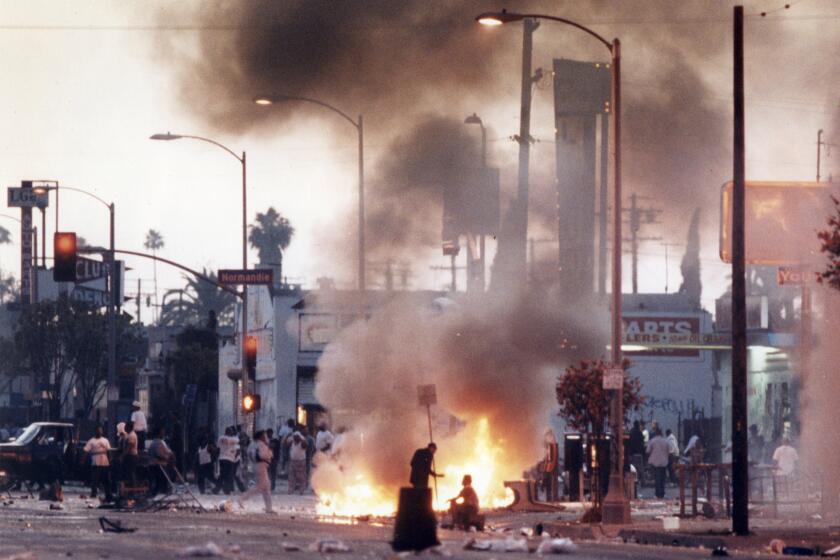Column: Their pupuseria survived the riots. Now, Central Americans thrive in South L.A.
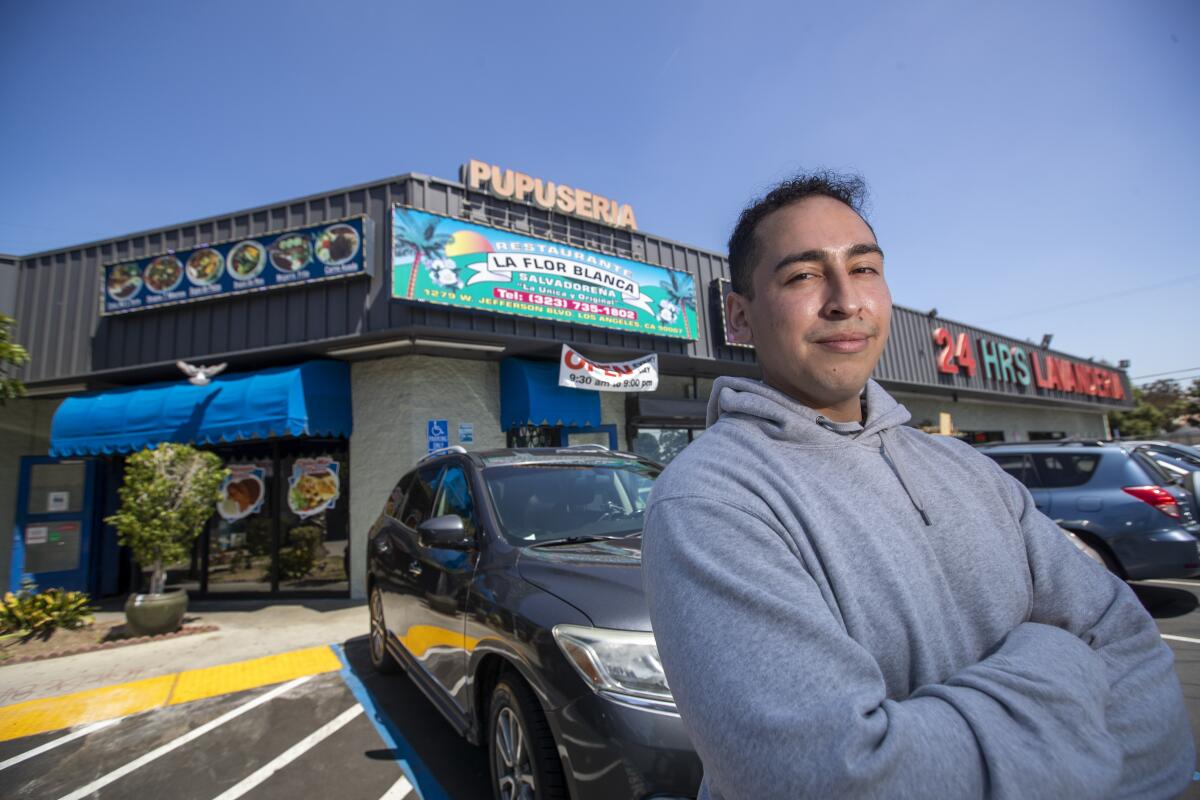
- Share via
As the L.A. riots escalated, Rolando Navarrete and his siblings paid local men to protect their pupuseria.
Refugees from El Salvador, the Navarettes had scraped together the cash to open La Flor Blanca two years earlier near the corner of Vernon and Broadway. It was one of the first Central American restaurants in historically Black South L.A.
“Can you imagine that?” Rolando’s son, Alexis Navarrete, said recently. “You had a family that had saved their entire life savings to start up the restaurant, and the L.A. riots occur.”
Many businesses in La Flor Blanca’s South Park neighborhood suffered extensive damage. The young, tiny eatery not only survived the riots but ultimately thrived. And around it, a Central American community grew.
Thirty years later, there are as many pupuserias in large swaths of South L.A. west of the 110 Freeway as there are taquerias and burger stands.
Read our full coverage of the 30th anniversary of the L.A. riots.
Evangelical storefront churches painted in the blue and white common to all Central American flags stand near massive Black houses of worship. Paintings and decals of quetzals, the long-plumed, vibrantly colored national bird of Guatemala, are as common as murals of the Virgin of Guadalupe.
In a region where Mexicans still far too often overshadow Central Americans, a new generation is stepping up in South L.A.’s civic and political life, and forging a new identity: “South Central American,” a nickname popularized by Alejandro Villalpando, a professor at Cal State L.A. and a South L.A. native with Guatemalan roots.
“A lot of them had to struggle having to fit into broader Mexican communities in Southern California,” said USC sociologist professor Pierrette Hondagneu-Sotelo, who co-wrote a book last year about South L.A. “South L.A. allowed Central Americans a place to be themselves.”
Rolando Navarrete struck out on his own a few years after the riots. His siblings stayed with the original restaurant, which still stands; he opened another La Flor Blanca near USC in 1999.
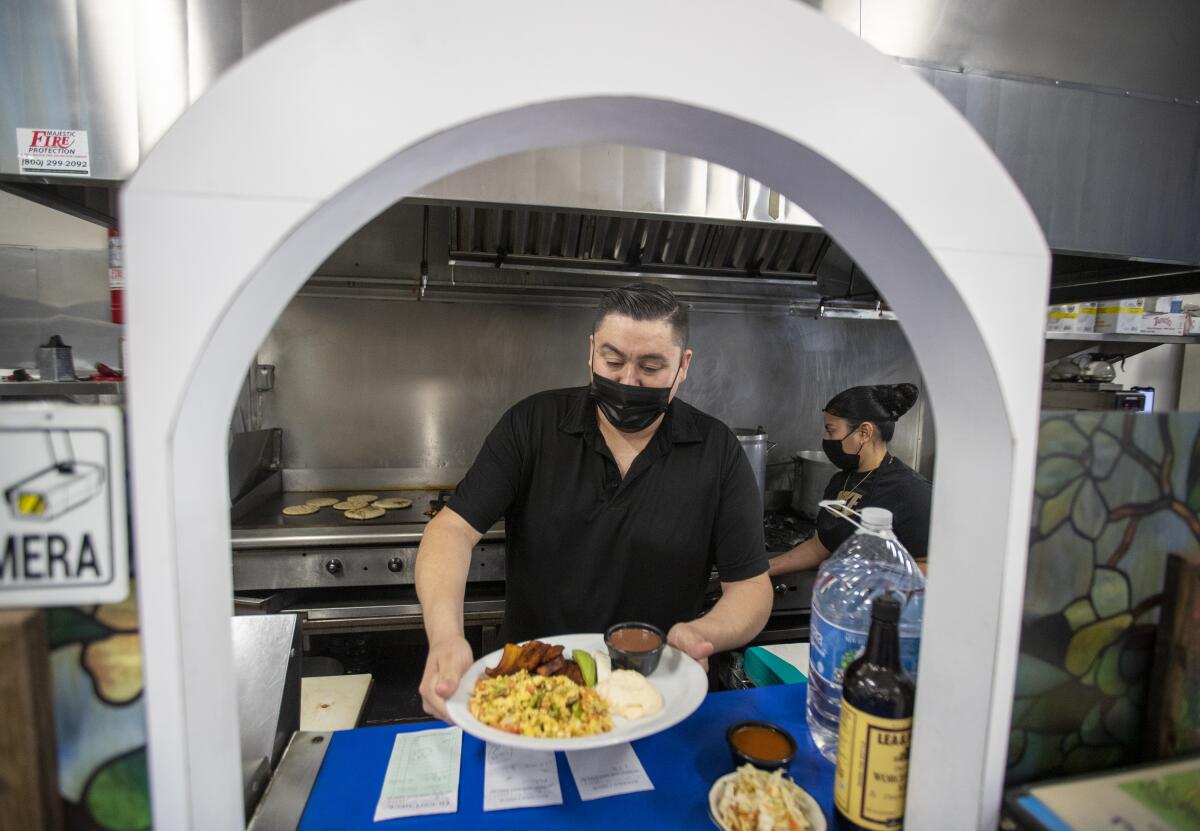
He eventually made enough money to move his family to Rancho Cucamonga for what he thought would be a better life, the memories of the 1992 riots never far away.
Navarrete commuted every day to work, bringing Alexis and his brothers along to help only on weekends.
Alexis went off to college in Denver to study computer coding, then majored in business administration at Cal Poly Pomona.
When his father retired in 2018, Alexis — then 22 — stepped up to take over, after tiring of the “white suburban culture” of Rancho Cucamonga. He returned full time to a South L.A. radically different from the one his father had migrated to.
When I visited Alexis at La Flor Blanca on a recent weekday morning, the place radiated with that “South Central American” vibe.
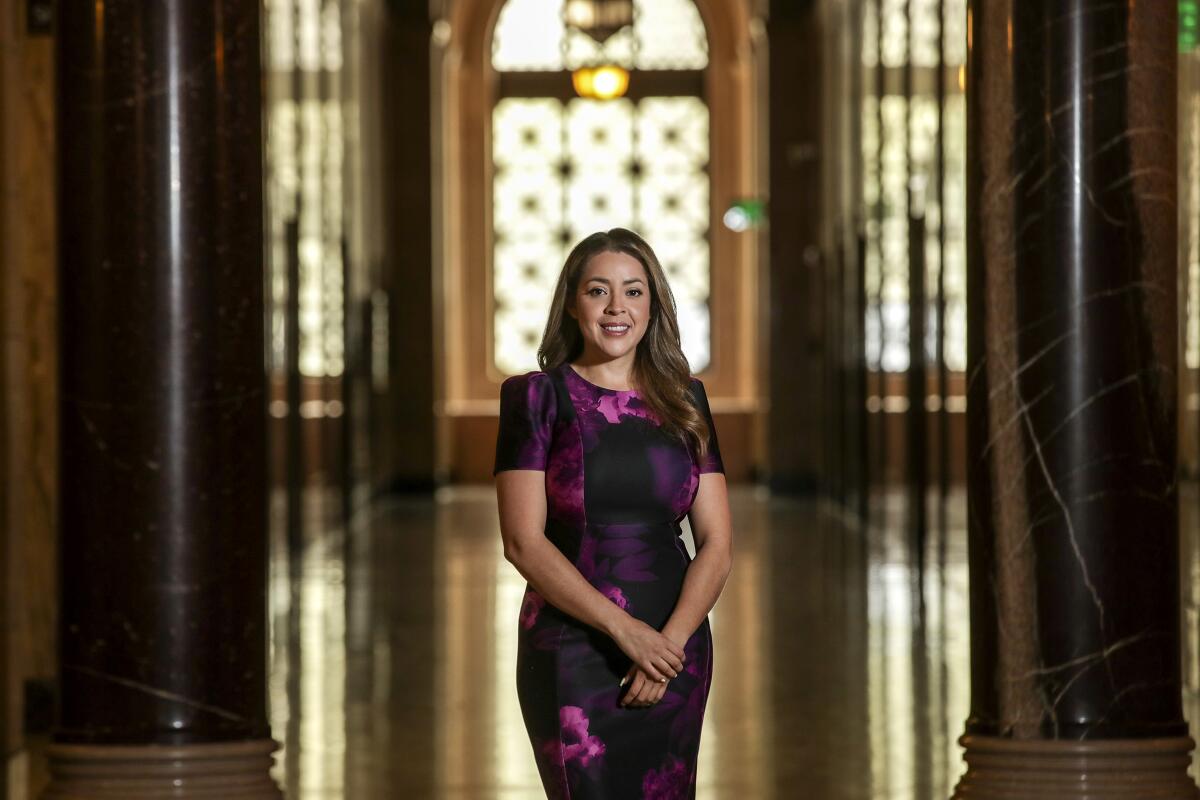
Middle-aged customers and college students ate breakfast. Two flat-screen televisions aired a Spanish-language version of Tim Burton’s “Alice in Wonderland” and some apocalyptic AMC cable channel series or other. The phone rang with to-go orders.
“It’s easier to manage algorithms,” Navarrete said half-jokingly, “than it is to manage a legacy.”
When he first took over, the entire staff refused to take orders from someone they had seen grow up before their eyes. Some sued, alleging food poisoning. Longtime customers kept asking for the real owner.
Alexis thought about going back to coding, until Rolando died of a heart attack at his beloved La Flor Blanca in May 2020, at age 56.
Two years later, Alexis, now 25, finally feels at home.
“I have the privilege to have been born into this,” he said. He had just unloaded a Nissan Pathfinder filled with produce and recorded a short video of me eating fried plantains that I dunked in salty Salvadoran-style crema. “We’re still in the intro phase of what South L.A. is becoming.”
Denis Anaya, a Salvadoran notary, said his Latino friends could not understand why he moved his office last year to a black neighborhood on Central Avenue that they associated with “gang-banging” and drive-by shootings.
Black Belizeans, Hondurans and Panamanians began to settle in South Los Angeles in the 1960s and 1970s. These Central Americans felt more at home among Black Angelenos than among their fellow Latinos in East Los Angeles and other barrios, according to Alberto Retana, president of Community Coalition and the son of a Costa Rican father.
“It’s easy to say ‘Latino’ and put all these groups in it,” he said. “But terms like that also erase communities and their complexities, even among ourselves.”
Then, in the 1970s and 1980s, political instability in Central America brought refugees to the nearby barrios of Pico-Union, Westlake and MacArthur Park. Some of that growing population spread out to nearby South L.A., where Mexican Americans had always had a presence.
“It represented a more peaceful home and neighborhood” compared to the more crowded areas where some Central Americans originally landed, said Hondagneu-Sotelo. “That became a major draw.”
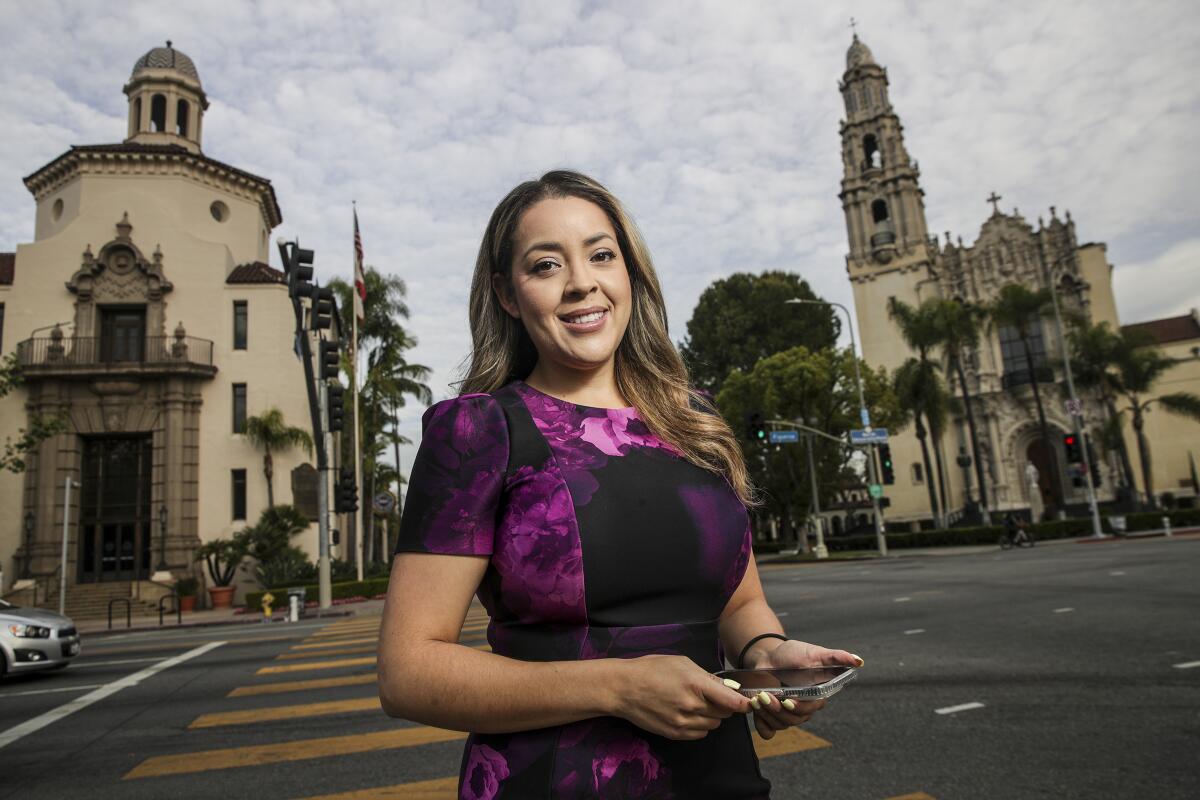
The 1992 riots accelerated this shift, especially because Pico-Union was one of its hot spots.
For the Central Americans who were already in South L.A., the unrest created a sense that they needed to become more politically involved, according to Yenise Camacho.
Her Honduran mother remembers “the horrible smell of smoke the following days” but also a sense of hopelessness about the invisibility of Central Americans.
“Working-class Central Americans were also physically attacked” during the riots, said Camacho, 33. “Their stores were also looted, or even burned to the ground. Yet, my mother feels that those stories were not heard.”
In one notorious example, Mexican American leaders held a news conference outside the Hollenbeck Youth Center in Boyle Heights two days into the riots to congratulate Latinos on the Eastside for not participating.
“Meanwhile, on TV, were there were a lot of Latinos looting,” said Manuel Pastor, director of USC‘s Equity Research Institute and Hondagneu-Sotelo’s co-author. “The leadership was so out of touch that they had not invited any Central Americans to show up, or any Latinos from South L.A.”
It was a slight that made Central American leaders realize “their political fate was not in the internecine politics of refugee groups but rather that they have a stake in L.A. in particular,” Pastor said.
In South L.A., this realization began to play out painfully in school playgrounds, according to Julio Esperias.
He and his family were the only Latinos on their street. Black neighbors embraced them and organized a block watch to ensure nothing happened to anyone during the riots, he recalled.
At school, though, Esperias got weird looks from classmates when he tried to explain his background as the son of Guatemalan and Salvadoran parents.
“There was a sense of shame, so I would just say that I was Mexican,” the 42-year-old said.
His family thought about moving to Downey, and Esperias considered not returning once he went off to study pre-med at UC Santa Cruz.
Then, he heard a speech by Angela Davis that “transformed how I thought about where I was from.” He moved back to South L.A., involved himself in city politics and bought a house on the same street as his parents.
“They always had a dream of returning back to Central America,” Esperias said. “That’s not [my generation]. We’ve established ourselves, and we’re not going elsewhere anymore.”
But he worries that encroaching gentrification and continued social inequity in South L.A. might make Central Americans “face the same displacement that has happened to our Black neighbors.”
Camacho is now a field deputy for L.A. City Councilmember Curren Price and previously worked for another South L.A. Councilmember, Marqueece Harris-Dawson. She praised the council members, who are both Black American, for actively seeking to hire Central American staffers like herself who grew up in the districts where they work.
South L.A. today is 62% Latino and 28% Black, according to the latest demographic profile by the Los Angeles Department of City Planning. Research by Pastor and Hondagneu-Sotelo found that Central Americans make up roughly 30% of that Latino population, compared with 17% of Latinos in L.A. County as a whole.
“Who better to understand a community than people who came from that community and talk their language?” Camacho said. “I can speak for many people from my generation. They decided to come back home after going off to college. How can we make a difference by moving out? If we want to see change at home, we need to stay home. I can’t make my house nicer if I leave.”
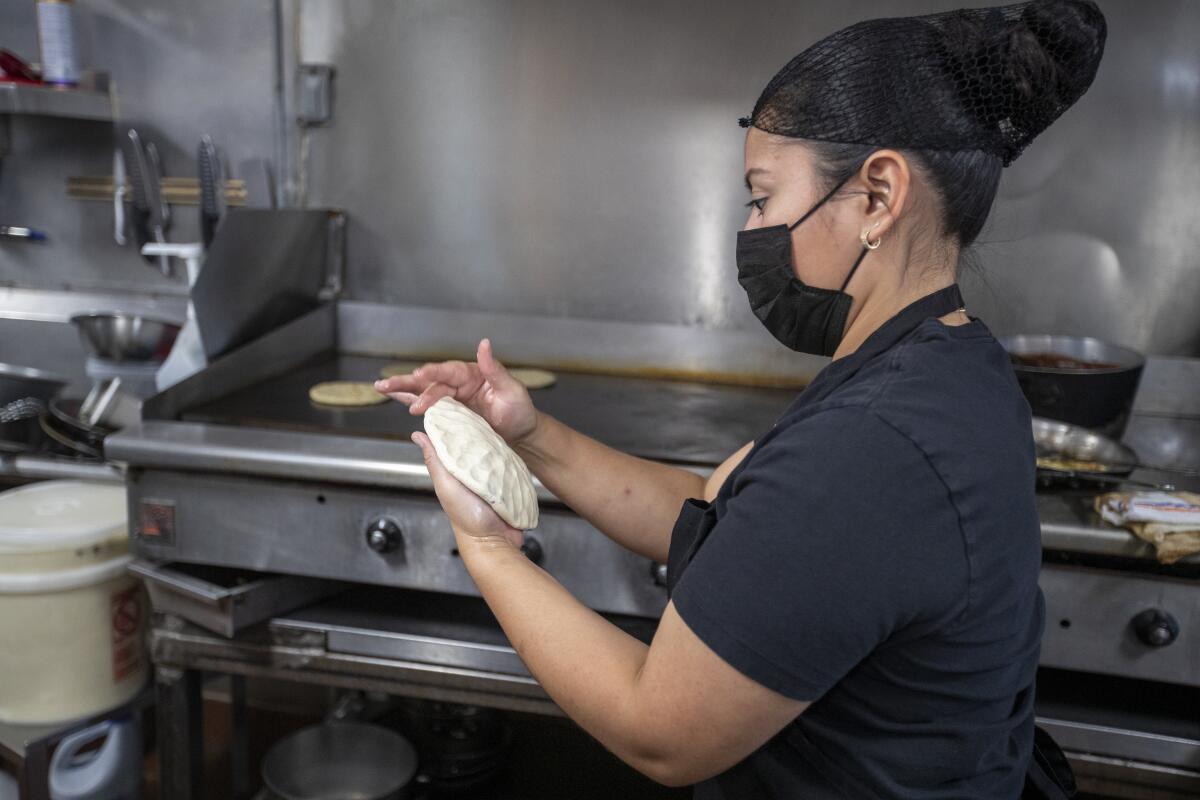
Back at La Flor Blanca, Navarrete said the menu is the only thing he doesn’t plan to modernize.
“The old school is still important,” he said. “My dad’s generation used little restaurants like this to connect and create culture. But we’re doing our own thing now.”
He has brought the restaurant into the digital age with social media accounts — his TikTok videos hyping up entrees regularly get thousands of views.
Customers can now pay by credit card as well as cash. Earlier this month, he installed air conditioning and tinted the windows to prepare for the summer. La Flor Blanca recently catered an event for Price’s opponent, Dulce Vasquez, a Mexican American whose campaign manager is a Salvadoran American from South L.A.
Navarrete rebuffed a suggestion from friends to move his pupuseria to Rancho Cucamonga to take advantage of the dearth of Salvadoran restaurants out there.
“If we master it in South L.A., we can get in anywhere,” he said. “Central Americans are happening. If you view us as a stock market, we were low for so long — and now we’re exploding.”
More to Read
Sign up for Essential California
The most important California stories and recommendations in your inbox every morning.
You may occasionally receive promotional content from the Los Angeles Times.
